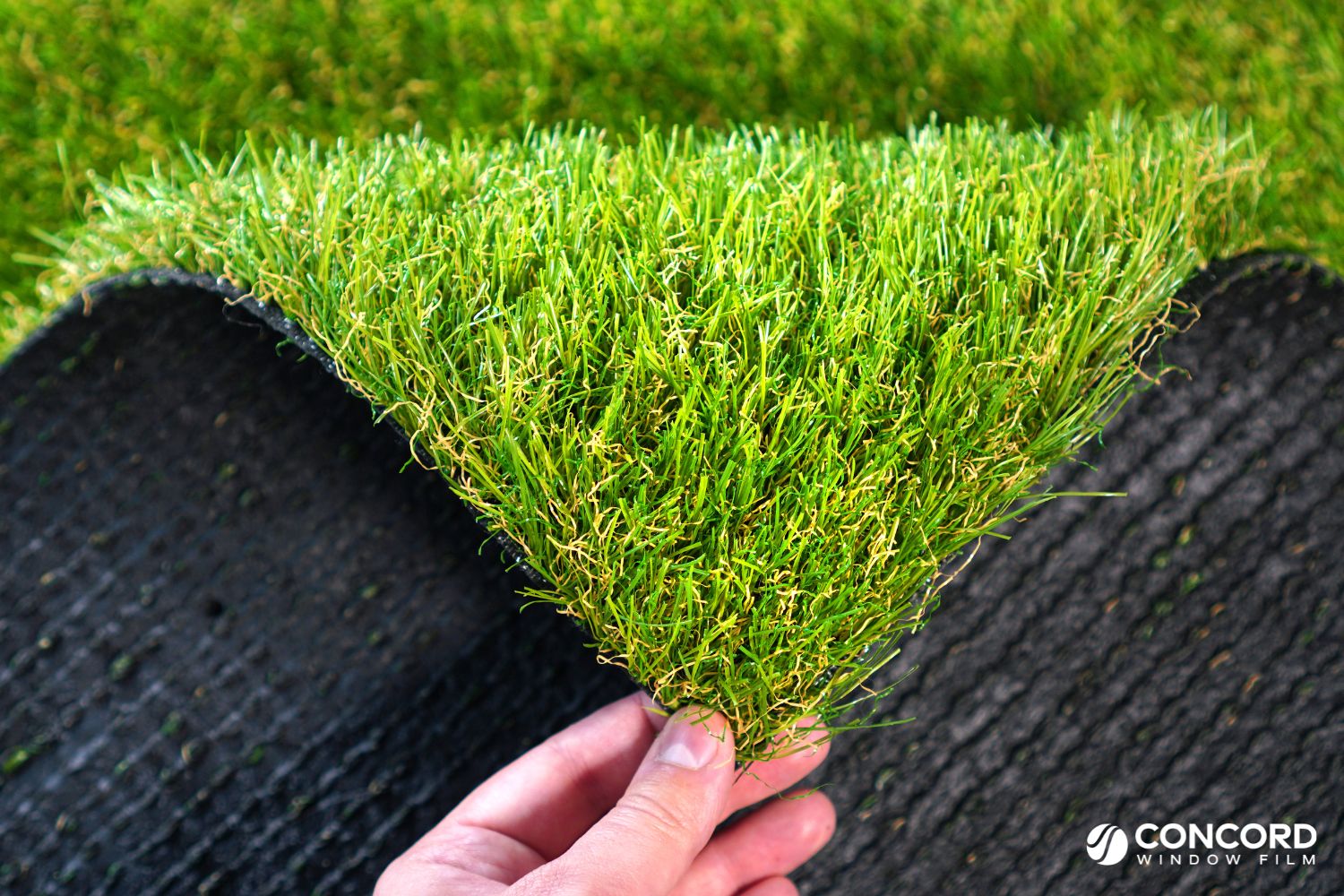

If you’ve noticed patches of your artificial turf turning brown, melting, or even warping, you’re not alone. This frustrating issue has become increasingly common in recent years—especially for homeowners with modern low-E windows. While low-E glass is great for energy efficiency, it can sometimes create unintended consequences outdoors.
In this guide, we’ll explain why turf melts or burns, what warning signs to look for, and the most effective solutions to prevent damage—from natural fixes like shade to specialty exterior films designed specifically to block harmful reflections.
Low-emissivity (low-E) windows are designed to keep homes cooler by reflecting infrared heat. Unfortunately, the reflective coating can act like a mirror. When the sun hits these windows at certain angles, the reflected rays concentrate onto your lawn—often reaching temperatures far higher than the turf can withstand.
The effect is similar to holding a magnifying glass over grass. The concentrated beam of light can heat artificial turf to temperatures above 200°F, easily causing it to melt or warp.
Unlike natural grass, synthetic turf is made from plastics like polyethylene or nylon. While durable, these materials have a melting point that can’t withstand concentrated solar reflections. That’s why turf burns in precise, mirror-like patterns that match window reflections.
Melted, shiny spots on the turf surface
Brown or discolored streaks in straight lines
Warped or curled blades
Turf directly across from second-story windows
Turf next to large, reflective sliding glass doors
Narrow side yards with little airflow or shade
There are several ways to solve the turf-melting problem, ranging from low-cost adjustments to more permanent fixes.
Often, regular window screens that come with windows to keep out bugs, are enough to break up the concentration of solar energy and prevent the burning. This is an expensive place to start if you have the screens on hand but don’t have them installed.
Exterior solar screens, shutters, or mesh shades can block sunlight before it reflects outward. This not only protects your turf but also helps reduce heat inside your home.
Strategically planting bushes, hedges, or trees in front of reflective windows provides shade and adds curb appeal. It’s a natural, long-term solution.
Some homeowners turn to specialty exterior window films designed specifically to diffuse reflections. While Concord Window Film doesn’t offer this type of film, here are three trusted options:
This film reduces harmful reflections while maintaining the energy efficiency of low-E windows.
A perforated exterior film that disperses sunlight, preventing concentrated heat from burning turf.
Specifically designed for turf protection, this film allows light in while softening reflections.
Some turf products are made with higher melting points or UV stabilizers, making them more resistant to damage. If you’re replacing your turf, ask about heat resistance ratings.
Adding exterior awnings, pergolas, or overhangs above reflective windows can redirect sunlight and reduce direct reflection onto turf areas.
At Concord Window Film, our expertise lies in interior solar control window films that enhance comfort, privacy, and energy efficiency inside your home. We don’t carry exterior turf-protection films because we believe firms that specialize in that type of film and in exterior window film installation – which has more challenges – are better suited to serve you.
Even though we don’t sell these specialty products, we know how frustrating turf damage can be. That’s why we created this guide—to provide clear solutions and point you toward resources that can help.
Yes, natural grass can scorch, though it typically recovers. Turf, however, permanently melts when exposed to high temperatures.
Not all, but certain angles, coatings, and exposures increase the risk. South- and west-facing windows are usually the biggest culprits.
No. While melted turf may need repair, you can prevent future damage with shade, awnings, or exterior films.
Some homeowners use temporary covers, decals, or screens. However, long-term solutions like films or shade work best.
Replacing reflective low-E glass with non-reflective alternatives can help, but it’s costly and reduces energy efficiency.
Often, exterior screens or strategically placed landscaping provide cost-effective protection without altering windows.
Turf melting or burning is a frustrating but solvable problem. With low-E windows reflecting concentrated sunlight, homeowners must take proactive steps to protect their outdoor spaces. Whether you choose landscaping, shading, upgraded turf, or specialty exterior films like SOLYX® Reflect Protect, Turf Guard, or Turf Shield, you can stop turf damage before it starts.
At Concord Window Film, we may not carry these exterior solutions, but we’re committed to helping you make informed decisions to protect your investment.
Read related content: Melting Vinyl Siding: Causes and Solutions